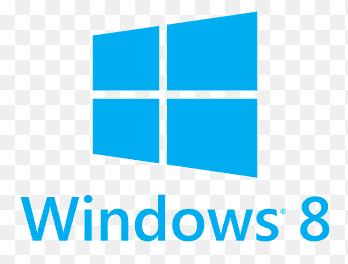Key Features:
- **Start Screen**:
– **Live Tiles**: The traditional Start menu was replaced by a full-screen Start Screen with live tiles. These tiles display real-time updates from apps, such as email notifications, calendar events, and news, and are designed to be easily accessible on touchscreens.
– **Tile Customization**: Users can customize the size, arrangement, and grouping of tiles on the Start Screen, providing a personalized interface.
- **User Interface (UI)**:
– **Metro Design Language**: Windows 8 introduced the Metro (later rebranded as Modern) design language, characterized by flat design, bold colors, and clean typography. This design approach was consistent across the OS and its apps, aimed at touch-friendly interactions.
– **Charms Bar**: The Charms Bar is a menu accessible from the right side of the screen, providing quick access to system functions like Search, Share, Start, Devices, and Settings. It was designed to be easily accessible with a swipe from the edge of a touchscreen or a mouse movement.
– **Multitasking**: Windows 8 introduced a new way to multitask by allowing users to snap two apps side-by-side on the screen. This feature was especially useful for productivity on tablets and smaller screens.
- **Performance and Compatibility**:
– **Optimized for Touch**: Windows 8 was built to run efficiently on both touch-enabled devices and traditional desktops, with support for a wide range of hardware, from high-performance PCs to low-power tablets.
– **Faster Boot Times**: The OS was designed to boot faster than previous versions, thanks to improvements in the kernel and the use of a hybrid boot system that combines cold startup with hibernation.
- **Windows Store and Apps**:
– **Windows Store**: Windows 8 introduced the Windows Store, a digital distribution platform where users could download and install Modern (Metro) apps. These apps were designed to run in full-screen mode and were optimized for touch interaction.
– **App Ecosystem**: While traditional desktop applications were still supported, Windows 8 focused on building a new ecosystem of apps specifically designed for the Modern interface.
- **Security Enhancements**:
– **Windows Defender**: Integrated as the default antivirus solution, providing real-time protection against malware and other threats.
– **Secure Boot**: A feature that helps protect the system from malware by ensuring that only signed and verified code can boot on the device.
– **BitLocker**: Full-disk encryption was improved and made more accessible, helping to protect data on devices, especially in enterprise environments.
- **Cloud Integration**:
– **Microsoft Account**: Users could sign in with a Microsoft Account, allowing settings, preferences, and apps to sync across multiple devices. This integration also extended to cloud storage services like OneDrive, making it easier to access files from anywhere.
– **OneDrive**: Integrated cloud storage that allows users to save and sync files across devices connected to their Microsoft account.
- **File Explorer and File History**:
– **File Explorer Ribbon**: The traditional Windows Explorer was updated with a ribbon interface, similar to Microsoft Office, providing easier access to file management tools.
– **File History**: A new backup feature that automatically saves copies of files in designated folders, allowing users to restore previous versions if needed.
- **Internet Explorer 10**:
– **Two Versions**: Windows 8 shipped with Internet Explorer 10, which came in both a desktop version and a Modern UI version optimized for touch.
– **Improved Performance**: Internet Explorer 10 was designed to be faster and more secure, with better support for HTML5 and modern web standards.
- **Networking and Connectivity**:
– **Native USB 3.0 Support**: Windows 8 included built-in support for USB 3.0, providing faster data transfer speeds and better power management for connected devices.
– **Improved Wi-Fi and Mobile Networking**: Enhanced support for mobile broadband networks and better management of network connections.
- **Editions of Windows 8**:
– **Windows 8**: The standard edition for home users, with basic features like the Start Screen, Windows Store, and cloud integration.
– **Windows 8 Pro**: Includes all the features of Windows 8, plus additional tools for professionals, such as BitLocker, Hyper-V, and Remote Desktop.
– **Windows 8 Enterprise**: Aimed at large organizations, offering all the features of Windows 8 Pro, along with advanced IT management and deployment tools.
– **Windows RT**: A version designed specifically for ARM-based devices, such as tablets, with a focus on energy efficiency and mobility. Windows RT only runs apps from the Windows Store and comes with a version of Microsoft Office optimized for touch.
### Reception and Criticism:
– **User Interface**: Windows 8 received mixed reviews, with praise for its performance improvements and new features, but significant criticism for its user interface changes. Many users found the removal of the traditional Start menu and the emphasis on the Modern interface confusing, particularly on non-touch devices.
– **Learning Curve**: The new interface introduced a steep learning curve for users accustomed to previous versions of Windows, leading to frustration and lower adoption rates among some user segments.
– **Desktop Experience**: While the Modern UI was touch-friendly, it often felt out of place on traditional desktops and laptops, where users preferred the more familiar desktop environment.
### Windows 8.1 Update:
In response to user feedback, Microsoft released Windows 8.1 in October 2013 as a free update. Windows 8.1 restored some of the missing features, including a Start button (though it still directed to the Start Screen) and improved customization options for the Start Screen. It also added more integration with OneDrive and brought back the ability to boot directly to the desktop.
### Legacy:
Windows 8 is remembered as a bold but controversial step in the evolution of Windows, with its attempt to bridge the gap between desktop and mobile computing. While it introduced many modern features that would carry over into future versions of Windows, the backlash against its user interface ultimately led Microsoft to refine and improve the experience in subsequent releases, such as Windows 8.1.

